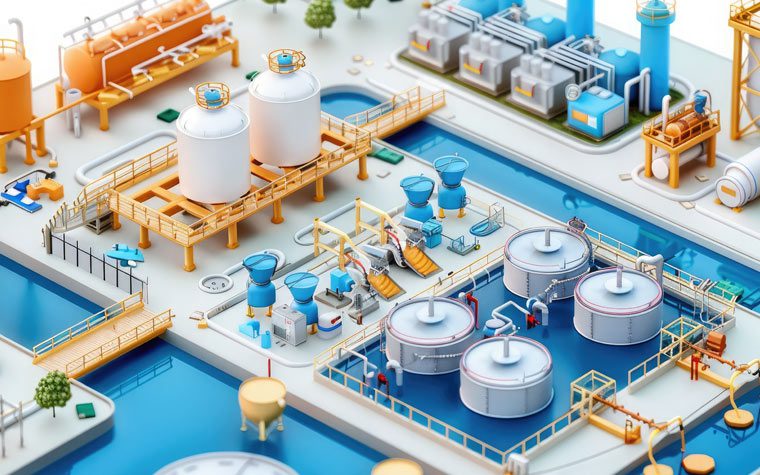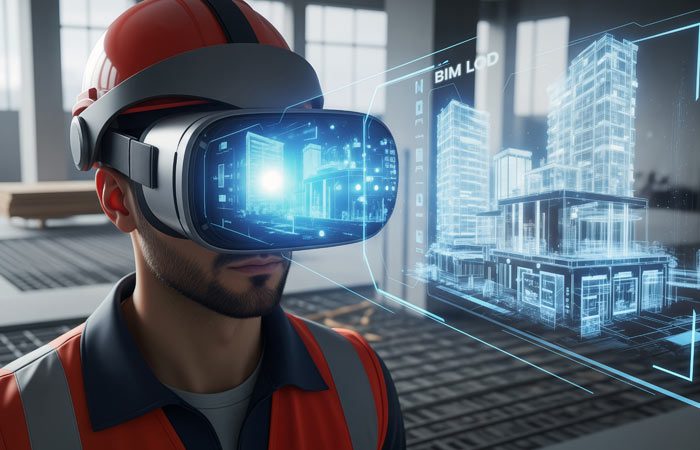
BIM for Water and Wastewater Engineering: From Concept to Asset Management
In a world facing increasing climate challenges, aging infrastructure, and growing urban populations, the importance of resilient and sustainable water and wastewater systems cannot be overstated. Engineering firms are under pressure to deliver these complex projects faster, more efficiently, and with minimal environmental impact. Enter Building Information Modeling (BIM) — a transformative approach that’s reshaping how we plan, design, construct, and maintain water infrastructure.
Traditionally seen as a design tool for vertical construction, BIM is now evolving into a critical enabler in horizontal and utility-based infrastructure — including water supply networks, wastewater treatment plants, pumping stations, stormwater systems, and more. From conceptual design to asset management, BIM is bridging information silos, improving stakeholder coordination, and delivering long-term value.
Why BIM Matters in Water and Wastewater Projects
Water and wastewater infrastructure projects involve diverse disciplines — civil, mechanical, electrical, process, structural, and environmental engineering — all operating in tight coordination. These projects often stretch over large geographies and require accurate planning for topography, hydraulics, and integration with existing urban systems.
Here’s where BIM shines:
- Centralized Information Model: A single source of truth for all stakeholders — from designers to contractors to facility managers.
- Clash Detection: Early identification of conflicts between underground utilities, pipe networks, and structural elements.
- Hydraulic Simulation Integration: BIM models can be linked to hydraulic simulation tools (e.g., InfoWater, StormCAD), helping validate system behavior before construction begins.
- 4D and 5D Capabilities: Timeline simulations (4D) and cost models (5D) allow for better planning, phasing, and budget control.
From Concept to Commissioning: The BIM Lifecycle in Water Engineering
Let’s break down how BIM supports each stage of a water/wastewater project:
- Conceptual Design and Planning
In the earliest phase, engineers assess site conditions, regulations, water demand, and environmental constraints. BIM allows for:
- Integration of GIS and survey data
- Feasibility analysis of pipeline routing or plant siting
- Early stakeholder collaboration through 3D visualizations
This stage sets the foundation for stakeholder alignment and helps avoid costly redesigns downstream.
- Detailed Design and Modeling
BIM enables highly accurate, data-rich modeling of:
- Pipe networks with flow direction, slope, and connectivity
- Mechanical rooms with pumps, valves, and instrumentation
- Structural elements like tanks, clarifiers, and filter basins
At this point, clash detection ensures that disciplines do not operate in silos. For example, MEP engineers can coordinate pump layouts with civil engineers responsible for underground drainage and structural foundations.
- Construction Planning and Execution
Using 4D BIM (time simulation), contractors can sequence construction activities logically, reducing site disruptions and delays. BIM also assists with:
- Generating accurate quantity take-offs (QTOs)
- Streamlining procurement with model-linked BoQs
- Construction monitoring via drones and mobile BIM apps
This results in fewer change orders and a smoother handover.
- Operations and Asset Management
Arguably the most underutilized but impactful stage of BIM is in post-construction operations:
- Facility managers can access digital twins to track the condition of pumps, valves, and instrumentation
- Preventive maintenance can be scheduled based on sensor data linked to the BIM model
- Future retrofits or expansions become easier with as-built BIM data
This turns static assets into living, data-driven systems.
Digital Twin + BIM: The Next Leap
For water utilities and municipalities, pairing BIM with Digital Twin technology offers real-time visibility. Imagine a wastewater plant operator who can:
- View live SCADA data in a 3D environment
- Monitor tank levels, pump RPMs, and flow rates visually
- Simulate system behavior under stress (e.g., flood conditions)
This convergence of BIM, IoT, and AI is paving the way for smarter, more adaptive water infrastructure.
Challenges in Adoption
Despite the clear benefits, BIM adoption in water and wastewater projects still faces hurdles:
- Lack of standardized object libraries for pumps, valves, pipes in different geographies
- Limited integration between hydraulic modeling tools and BIM platforms
- Resistance to change among public utilities and legacy contractors
However, these barriers are being slowly dismantled through government mandates, better software interoperability, and upskilling across the engineering workforce.
TAAL Tech’s Role in Engineering the Future of Water Infrastructure
At TAAL Tech, we bring a deep understanding of BIM workflows tailored to infrastructure and plant engineering projects. Our multidisciplinary engineering teams support global clients across every stage of the water infrastructure lifecycle — from early design to facility digitization.
Key capabilities include:
- 3D BIM modeling for water treatment plants, pump stations, and network layouts using Revit, Civil 3D, and Plant 3D
- Point cloud to BIM conversion for modernization and retrofit projects
- Clash detection and constructability reviews
- Integration with hydraulic simulation tools for more reliable design outcomes
- Asset tagging and Digital Twin enablement for smarter facility management
With domain knowledge in water and wastewater systems, and robust experience in BIM-based delivery, TAAL Tech enables clients to transition from reactive design to proactive, data-informed project execution.
A Future-Ready Approach to Water Systems
As cities grow and climate uncertainty increases, resilient water infrastructure will be a cornerstone of sustainable development. BIM is no longer just a design innovation — it’s an operational necessity for engineering teams that want to deliver complex infrastructure with confidence.
From optimizing pipe networks to enabling predictive maintenance, BIM brings clarity, accuracy, and long-term value. Firms that embrace this digital-first mindset today will be the ones shaping the water systems of tomorrow.


